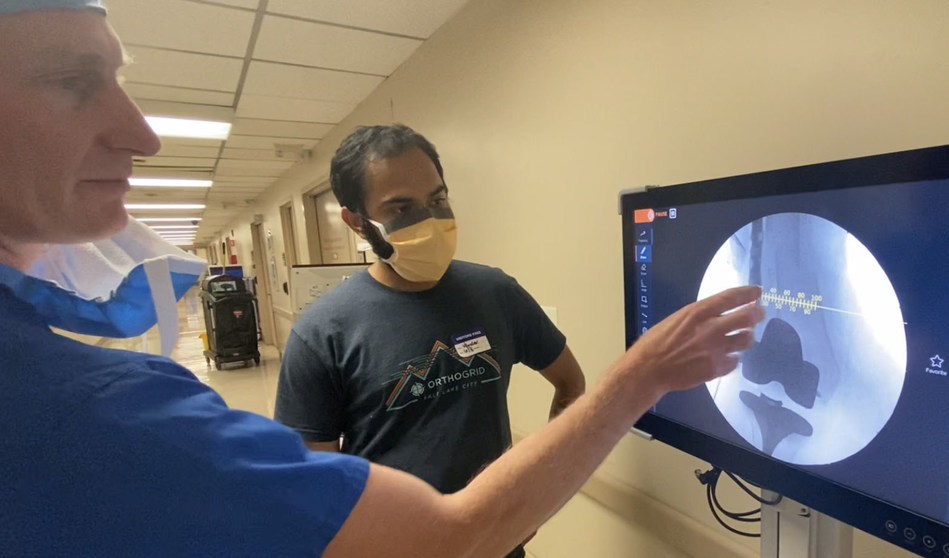OrthoGrid Systems Completes First Successful Testing of AI-Powered Software
OrthoGrid Systems, Inc., a global medtech company specializing in intraoperative surgical applications that aim to digitally transform orthopedic surgery, announces the first successful testing of its AI-powered software solution in live trauma surgery at University Medical Center (UMC) in Las Vegas, NV.

OrthoGrid set out to demonstrate that AI has an important role to play intraoperatively: “This is a huge step towards image-guided automation made possible by our advanced, deep learning-based algorithms applied to a specific, yet universal, use case in orthopedic surgery,” explains Richard Boddington, Co-Founder and Co-CEO of OrthoGrid.
Recommended AI News: Z-CERT and EclecticIQ Cooperate to Bring Benefits of CTI to Dutch Healthcare Sector
“We frequently use fluoroscopic images to determine the starting point and incremental advancement of instruments and implants as we’re repairing fractures in orthopedic trauma surgery. Having the ability to visualize the anticipated trajectory of our instruments and implants in real time offers the hope of improved efficiency, accuracy, and reproducibility,” said Jessica Bear, MD, orthopedic trauma surgeon at UMC.
Collaboratively with the product development team based in Salt Lake City, UT, researchers from OrthoGrid’s Center for Orthopedic Technology Research and Education in Strasbourg, France, have developed a complex, neural network-driven framework that has the capability to identify and track implants, instruments, and surgical tools. This milestone paves the way for OrthoGrid’s technology to solve many more intraoperative challenges that are currently unassisted or unsupported digitally.
Recommended AI News: Cofense Launches Free Resource Center and Searchable Database
“With real-time applications that support my existing workflow, the adoption is immediate and seamless without a learning curve. I can spend more time focusing on my quality of treatment, not adapting to a new device,” says Erik Kubiak, MD, Professor and Vice Chair, Department of Orthopedics at University of Nevada, Las Vegas.
“At first, automation is meant to augment or disrupt the method by which a standard practice is executed, not the established practice itself. Our aim is to support surgeons’ ability to be more proficient in what they know how and love to do: Operate,” shares Edouard Saget, Co-Founder and Co-CEO of OrthoGrid.
In addition to achieving this advancement, OrthoGrid has tackled important issues such as fluoroscopic distortion correction, a critical step to improving accuracy in orthopedic surgery. Now the company is focused on further testing and optimization of its AI-powered software solution, which it expects it to integrate into its FDA-cleared universal trauma application in the second half of 2020.
Recommended AI News: Overwhelming Identity Theft Risks Demand a New Approach to Securing Personal Information

Comments are closed, but trackbacks and pingbacks are open.